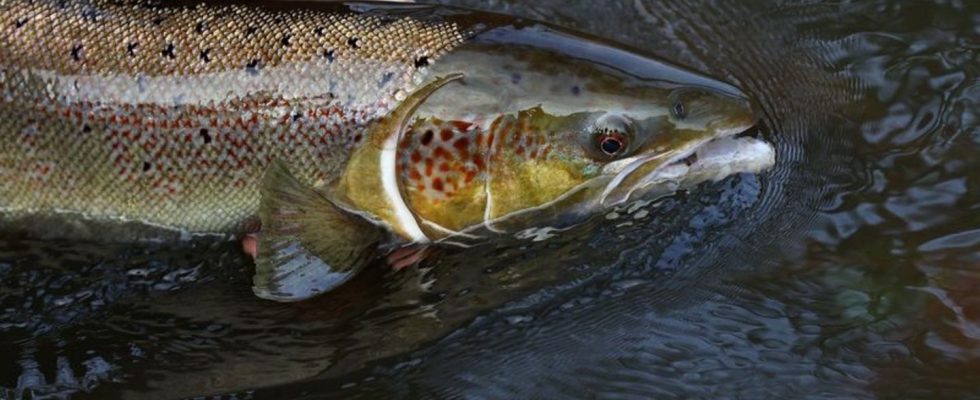natural reserve
Atlantic salmon now globally classified as “vulnerable.”
A salmon ready to spawn: The Atlantic salmon has now been classified as “potentially endangered” on the new Red List of Threatened Species globally. photo
© Ronny Hartmann/dpa-Zentralbild/dpa
The Red List now includes almost 160,000 animal and plant species, of which 44,000 are threatened. The International Union for Conservation of Nature (IUCN) published a new version of the list.
The Atlantic salmon is now classified as “Near Endangered” on the new Red List of Threatened Species globally. The global population shrank by 23 percent between 2006 and 2020, the International Union for Conservation of Nature (IUCN) reported on Monday.
“Near Endangered” is level two of the seven-level scale the IUCN uses. It ranges from “not endangered” to “near threatened”, “endangered”, “endangered”, “critically endangered”, “extinct in the wild” to “extinct after the year 1500”. Two further categories include species that have not yet been studied or for which there is not enough data. The Red List has been in existence since 1964. It now includes almost 160,000 animal and plant species, of which 44,000 are threatened.
The threats to salmon
The Atlantic salmon (Salmo salar), which is born in rivers and then migrates to the sea, is threatened in many ways: prey for the young fish is declining, while invasive species that are dangerous to them are spreading. Dams for hydroelectric power plants made it more difficult for them to reach the spawning grounds in the upper reaches of the rivers. Wild salmon are also threatened by salmon lice (Lepeophtheirus salmonis), which are often found in salmon farms. In addition, the humpback salmon (Oncorhynchus gorbuscha), which comes from the Pacific, is contesting the habitat of the Atlantic salmon. It is spreading across Northern Europe.
Numerous freshwater fish species are threatened
Of all 15,000 freshwater fish species analyzed, 17 percent are directly at risk from climate change, the IUCN reported. The term “endangered” in this context includes levels 3 to 5. This includes, for example, a lack of water in some rivers, sea level rise that pushes salt water into river mouths, and changes in the seasons. A total of 57 percent of freshwater fish are at risk from environmental pollution, 45 percent from dam construction and water extraction, 33 percent from invasive species and diseases and 25 percent from overfishing. In some species there are several reasons at the same time.
Successes in species protection
The IUCN also reported rare successes: the Saharan sable antelope (Oryx dammah), which became extinct in the wild in the late 1990s, was successfully reintroduced to Chad. The species is now considered “critically endangered” – level 4. Another antelope species, the saiga (Saiga tatarica), which occurs primarily in Kazakhstan, is no longer “endangered” (level 5) but only “potentially endangered” (Level 2). The IUCN is an umbrella organization of governmental and non-governmental conservation organizations.
IUCN Red List

